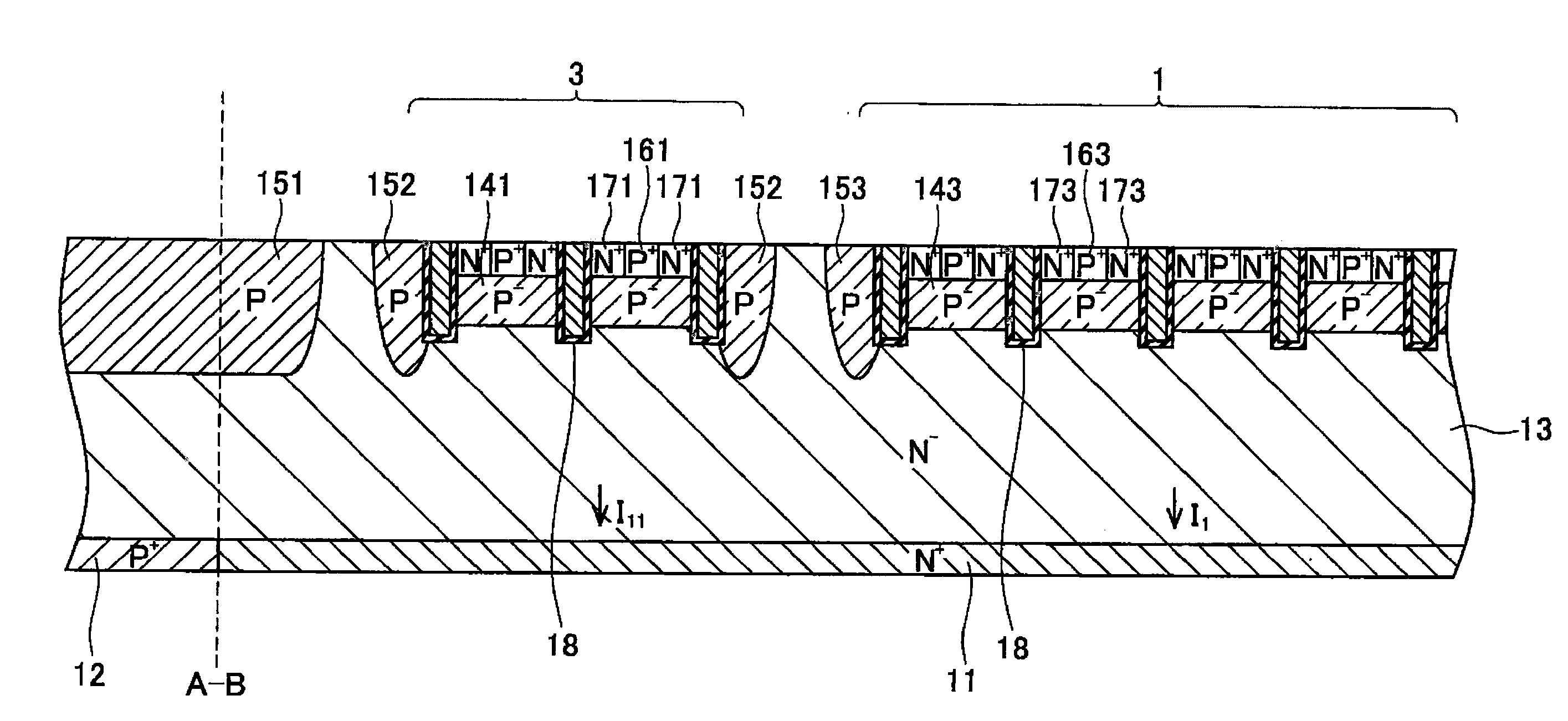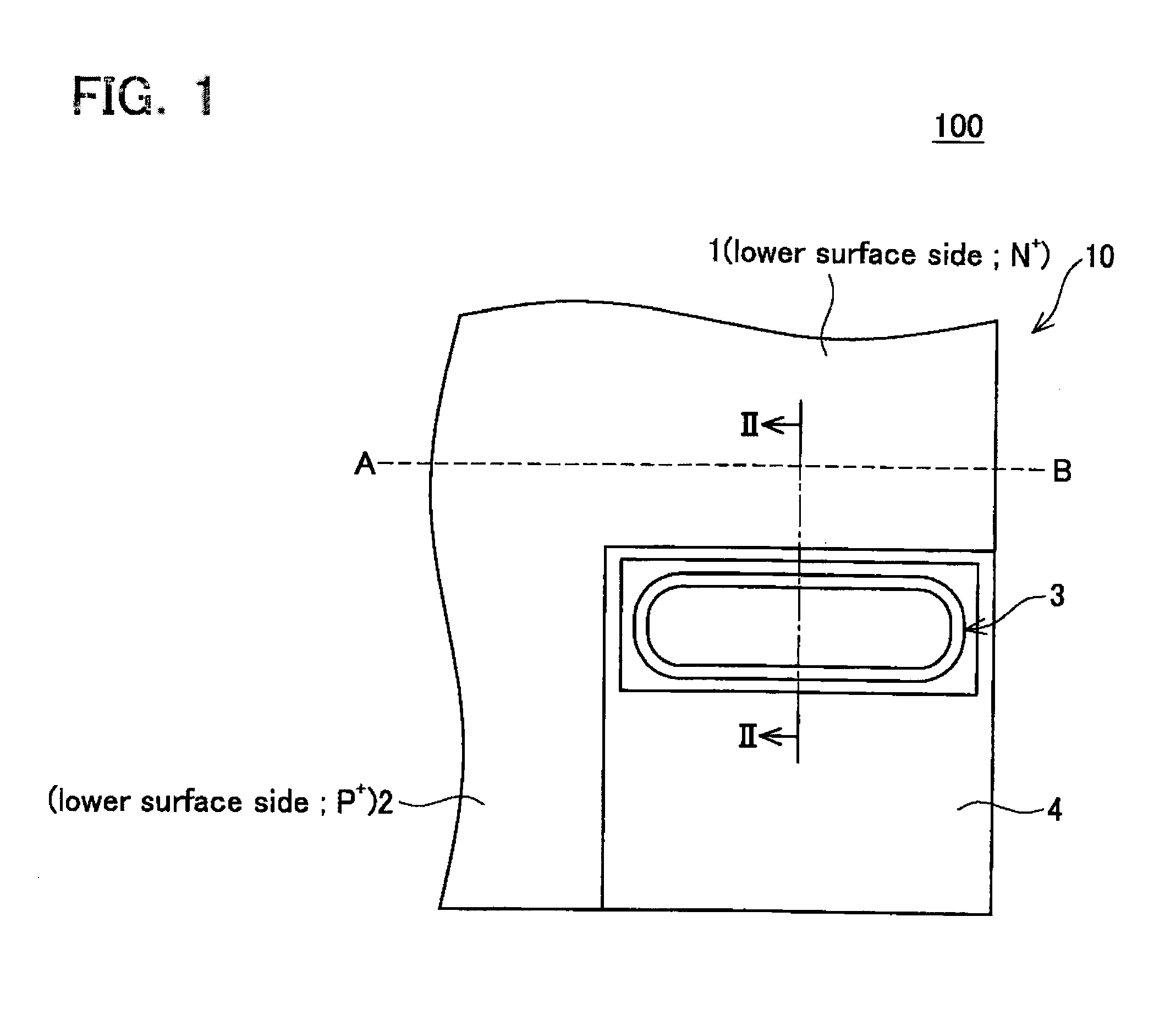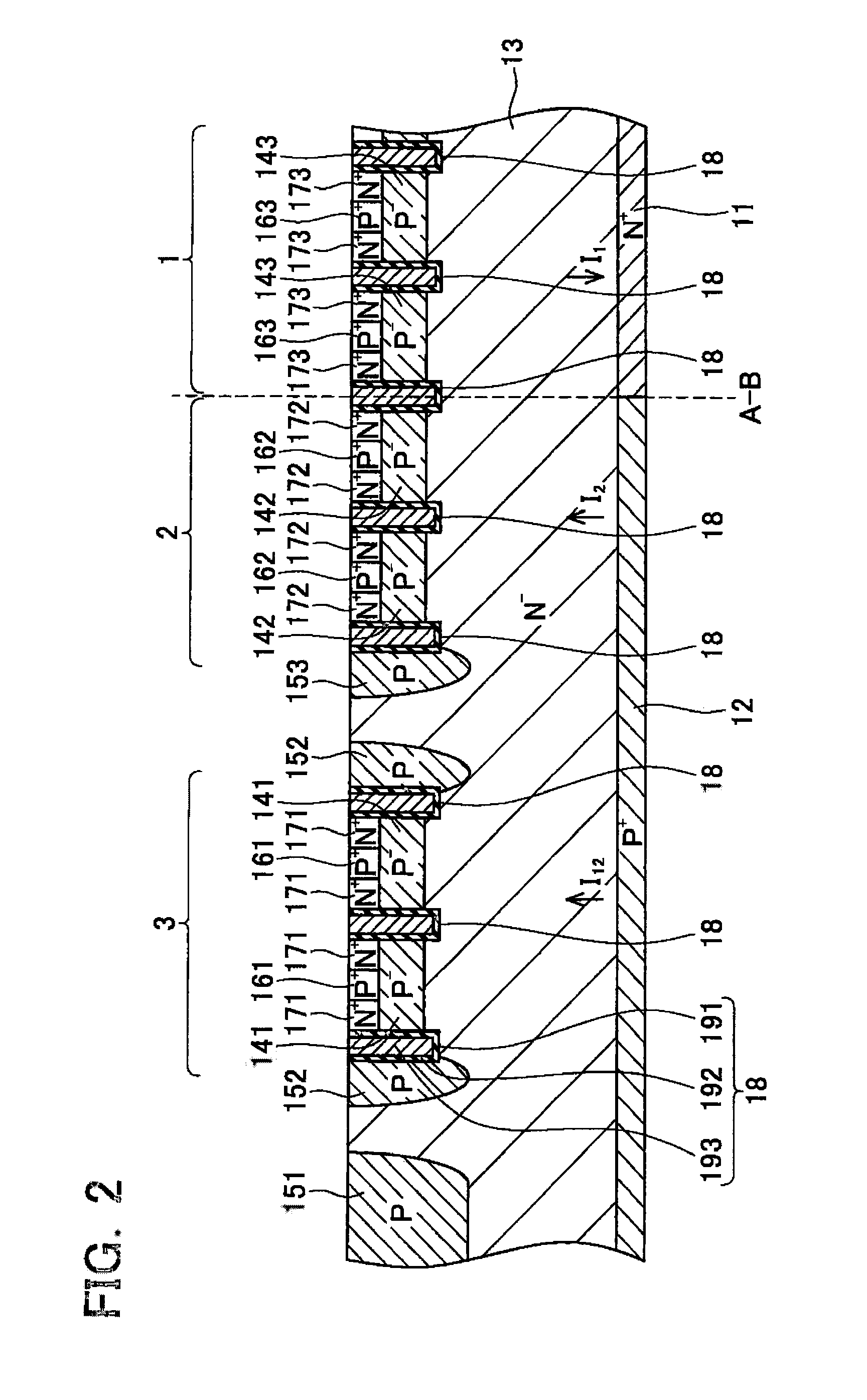Semiconductor device
a technology of semiconductor devices and diodes, applied in semiconductor devices, semiconductor/solid-state device details, electrical apparatus, etc., can solve the problem of more likely to be affected and achieve the effect of improving the accuracy with which the diode electric current is detected, good accuracy, and reducing the space taken up by the electric current detection region
- Summary
- Abstract
- Description
- Claims
- Application Information
AI Technical Summary
Benefits of technology
Problems solved by technology
Method used
Image
Examples
embodiment 1
[0028]Embodiment 1 of the present teachings will be explained with reference to the drawings. FIG. 1 is a schematic plan view of a semiconductor device 100, and shows the area around a boundary portion between a main active region and an electric current detection region. FIG. 2 is a schematic expanded cross-sectional view along line II-II of FIG. 1.
[0029]As shown in FIGS. 1 and 2, the semiconductor device 100 comprises a diode main region 1, an IGBT main region 2, an electric current detection region 3, and a diffusion layer region 4 that are formed in a semiconductor substrate 10. The semiconductor substrate 10 comprises a first N+ layer 11; a first P+ layer 12 adjacent to the first N+ layer 11; an N− layer 13 formed on the surfaces of the first N+ layer 11 and the first P+ layer 12; and N− layers 141, 142, 143 and P layers 151, 152, 153 formed on the surface of the N− layer 13. Second P+ layers 161, 162, 163 and second N+ layers 171, 172, 173 are respectively arranged on the surf...
embodiment 2
[0043]FIG. 3 is a schematic plan view of a semiconductor device 200 according to the present embodiment, and shows the area around a boundary portion between a main active region and an electric current detection region on a semiconductor substrate. FIG. 4 is a schematic expanded cross-sectional view along line IV-IV of FIG. 3.
[0044]With the semiconductor device 200, the position of the boundary (broken line AB) between the first P+ layer 12 and the first N+ layer 11 formed in the lower surface side of the semiconductor substrate 20 differs from that of the semiconductor device 100. In the main active region, the region comprising the first N+ layer 11 and the layers formed on the surface thereof becomes the diode main region 1, and the region comprising the first P+ layer 12 and the layers formed on the surface thereof becomes the IGBT active region 2. Like with the diode main region 1, the electric current detection region 3 is arranged in the first N+ layer 11 on the upper surfac...
embodiment 3
[0055]FIG. 5 is a schematic plan view of a semiconductor device 300 according to the present embodiment, and shows the area around a boundary portion between a main active region and an electric current detection region on a semiconductor substrate. FIG. 6 is a schematic expanded cross-sectional view along line VI-VI of FIG. 5.
[0056]As shown in FIGS. 5 and 6, an electric current detection region 31 and an electric current detection region 32 are located on the semiconductor device 300. In addition, the boundary (broken line AB) between the first P+ layer 12 and the first N+ layer 11 formed in the lower surface side of the semiconductor substrate 30 is positioned on an inactive region between the electric current detection region 31 and the electric current detection region 32. The electric current detection region 31 and the electric current detection region 32 are respectively surrounded by the P layer 152 like with the electric current detection region 3 of Embodiment 1. Because t...
PUM
 Login to View More
Login to View More Abstract
Description
Claims
Application Information
 Login to View More
Login to View More - R&D
- Intellectual Property
- Life Sciences
- Materials
- Tech Scout
- Unparalleled Data Quality
- Higher Quality Content
- 60% Fewer Hallucinations
Browse by: Latest US Patents, China's latest patents, Technical Efficacy Thesaurus, Application Domain, Technology Topic, Popular Technical Reports.
© 2025 PatSnap. All rights reserved.Legal|Privacy policy|Modern Slavery Act Transparency Statement|Sitemap|About US| Contact US: help@patsnap.com



